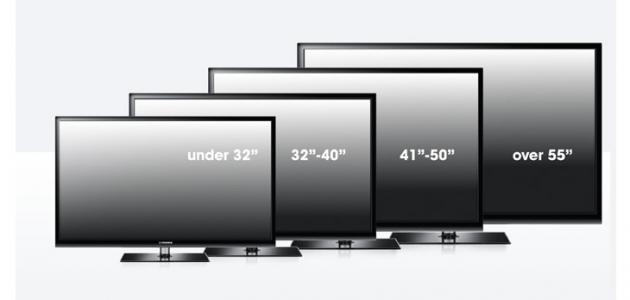Televisions
Television is one of the electronic receivers that helps transmit sounds and moving images from their source. Television is characterized by its strong influence on society, as it transmits to us what can be perceived through the sense of hearing and sight across vast distances. Television was considered a potential means for educational purposes and the development of personal relationships during the first period of the twentieth century, until it became an effective means of broadcasting during the middle of the century. The twentieth. Radio broadcasting technology was initially used in order for news and entertainment materials to reach people in all countries of the world, by using the radio broadcasting model. Today, television broadcasting is carried out through several methods, including terrestrial radio technology, over the air, or through coaxial cables.
There were a number of standards for color or black and white television during the middle period of the twentieth century, and these standards were constantly improved until the technology of television changed significantly, so the clarity and accuracy of the image increased, and the dimensions became variable, as the television displays images on wide screens. .
Types of TVs
There are many types of televisions, and a person needs to get to know these types when he has the desire to buy a television, without having any knowledge of the appropriate type for his requirements and needs. Among the most famous types of television are the following:
DLP Display TV
DLP TV (in English: Digital Light Processing) is characterized by a number of advantages and disadvantages, which are as follows:
Read also:What are the types of microscopes and what are their uses?- Positives:
- This TV works through digital light processing technology that uses a digital micromirror device, which is a device similar to photoconductors.
- This type is not subject to burning.
- Negatives:
- This type of TV may develop a defect known as the rainbow effect.
Plasma TV (PDP)
Plasma TV has many advantages and disadvantages, which are as follows:
- Positives:
- This type of TV uses panels made of plasma, which are characterized by their low prices. It is possible for a person to be able to pay a small amount of money to obtain a large screen of this type.
- This type is characterized by having a good color contrast ratio, so the colors are richer, while the black color is characterized by its depth.
- Effects on this type of TV are reduced or absent when displaying fast-moving images.
- Available in multiple sizes from 40 to 49 inches.
- Negatives:
- It is considered one of the types of televisions that are environmentally friendly, because it works by burning phosphorus in order for the screen to be able to display images. However, this technology generates a large amount of heat and causes energy consumption.
- The lifespan of plasma TVs is shorter than that of LCD TVs, as the TV can be used for approximately 30 hours.
- Relatively large weight.
- It is not possible to refill the TV with its gases after they run out.
- The shelf life of a TV ranges from ten to twenty years.
Liquid crystal television (LCD)
This type of TV is considered the most widely used at the present time, and this type of TV has a number of pros and cons, which are as follows:
Read also:industry in Iraq- Positives:
- This type of TV provides a greater degree of brightness than plasma TVs.
- It generates low heat.
- Light weight.
- There are two types of this TV, the first is the active one and the other is the TV that uses the 3D system, which is used with glasses.
- It is used as a TV screen and computer screen.
- Not combustible.
- Negatives:
- Ghosting appears when viewing fast-moving images, but this negativity can be solved by adjusting the refresh rate and setting it to 120 MHz or 240 MHz, although this is impractical, since the movies may appear as if they were shot using a regular camera.
- This type of TV may be subject to pixel damage, and the consumer may need to have one pixel damaged in order to be able to use the TV's warranty.
- Response can be slow at times.
- The screen may be affected by what is known as the door effect, so it is recommended to ensure the validity of the screen before purchasing it.
TV features
Television is distinguished from other broadcasting devices, such as radio, for example, by many characteristics, which are represented by the following:
Read also:How to make wood- It helps present events and news at the time they happen.
- It helps to transmit news through images and audio, and this helps spread knowledge and save time.
- It combines sound, image, and movement, which stimulates a person's senses and increases his attention.
The emergence of television in the world
Color television appeared as a new type in the nineteenth century AD, when it was invented by a Russian scientist known as A. A. Polumordvinov. As for digital television, it appeared during the nineties in the United States of America. The emergence of television began in the United States of America. During the year 1928 AD, America is considered the largest country that exports programs, as its exports of programs amounted to approximately one hundred and thirty thousand hours, at a cost equal to a thousand dollars per minute. Television appeared in the Arab world beginning with Morocco, where it appeared in 1954 AD. Then Iraq, which began broadcasting during the year 1956 AD until the rest of the Arab countries began broadcasting, and there became approximately one hundred and ninety stations during the year 1977 AD.









